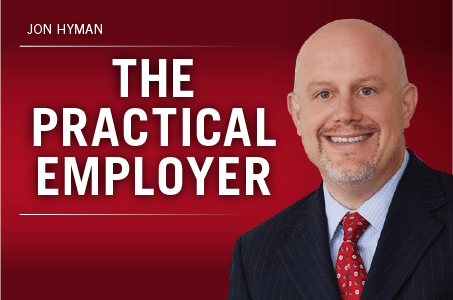To maintain my, ahem, lavish lifestyle, I’ll need to put away $2.2 million by the time I’m ready to retire at age 67, according to the retirement calculator on CNN Money. And with all those Social Security benefits promised to me, I’ll have it made.
As a longtime journalist and editor who torches fifty-dollar bills to light cigars, I scoff at this declaration about my retirement and any fearmongering from the financial experts out there, like this little rant on neglecting saving for retirement from Dave Ramsey: “You’re going to be so bad, you’re going to be ordering the cookbook ‘72 Ways to Prepare Alpo and Love It.’ ”
Well, that’s pretty ruff. I mean, rough.
“I could pawn my new Ferrari F60 for more than that,” I shout at my computer screen, adding a juicy raspberry and “na-na, na-na, boo-boo” for good measure.
Then reality hits.
Huh? Wait, I must have been daydreaming.
“Oh, crap,” I say to myself as I snap back to reality. There’s a better chance of Trump, Cruz, Clinton and Sanders singing “The hills are alive with the sound of music” together in a picturesque meadow than I being able to set aside more than $2 million to retire. Of course, my wife will have to fend for herself under this maddening retirement scenario. Love you, honey, but the “you” in CNN’s “Will you have enough to retire?” tool is second-person singular as far as I can tell, and there’s an “I” and a “me” in “retirement.” So …
But there is a ray of hope. If I hang on to my job until age 76, the calculator tells me I should be on track to have just enough money to retire. That is as long as I plan on being healthy for the rest of my days and I expire at age 92.
If I beat expectations and go for the century mark, or spend the last years of my life regretting those hot dogs and cheeseburgers I ate at backyard barbecues over the years, or those Bombay Sapphire martinis I imbibed at various social gatherings, or if my asthma catches up to me from the summers I spent breathing in smoke and coughing up black junk while grilling ribs at outdoor festivals, I could be hurting even more.
Medical bills: expensive. And playing bridge for money with people who are much better at cards than I am is expensive, too. Unfortunately, I’ve heard bad things about the “I’m gonna strike it rich” by playing the lottery every week strategy for retirement.
It’s not going to be easy for me to save enough for retirement for sure, but women have it even harder, writes Patty Kujawa in our retirement feature, “Making Up the Difference.” She cites a Transamerica report that found women are less likely than men to have access to a 401(k) and are also less likely to participate in one or even contribute to one.
Furthermore, in its 2016 Retirement Confidence survey, the Employee Benefits Research Institute found that 40 percent of unmarried women have less than $1,000 stashed away for retirement. Twenty-two percent of married women were under $1,000 as well.
The EBRI survey also offered this grim analysis: “Despite the fact that women tend to face higher expenses in retirement due to their greater longevity, unmarried women (36 percent) are more likely than their unmarried male counterparts (25 percent) to think they will need to accumulate less than $250,000 for retirement.”
Two hundred and fifty grand? What is this 1950?
If you had a quarter of a million dollars back then, it would be the same as almost $2.5 million today. Problem is it hasn’t been 1950 for, oh, 66 years.
Our friends at the Social Security Administration tell us that if you’re a female millennial born Jan. 1, 1982, you are expected to live almost 86 years, and if you make it to age 70, you’re on pace to live till 89.
That’s great, but we are going to start seeing more people work to 100 and beyond just to pay the bills.
It’s nice to know there are some organizations like Cedars-Sinai that offer a choice in retirement benefits. Employees at the Los Angeles-based health care facility can choose — yes, choose — between a defined contribution plan and a defined benefit plan.
While we can’t “turn back time to the good old days,” it’s important to know there are a lot of workers who are “stressed out” about retirement. Is there anything you, the HR community, can do to communicate differently about retirement? Clearly the scare tactics just aren’t working.
Let’s figure this out soon. I’m almost out of Alpo.
James Tehrani is Workforce’s managing editor. Follow Tehrani on Twitter at @WorkforceJames and like his blog on Facebook at “Whatever Works” blog.









